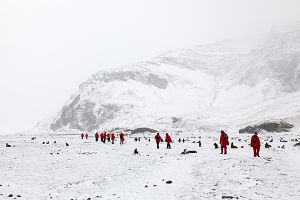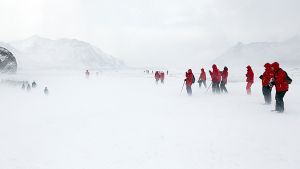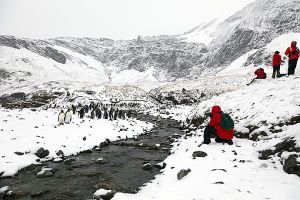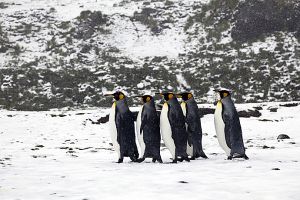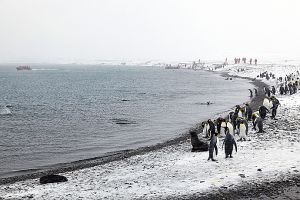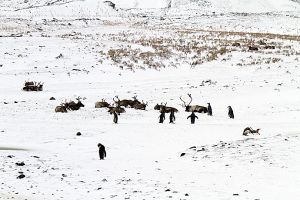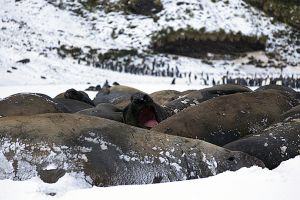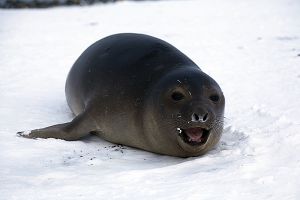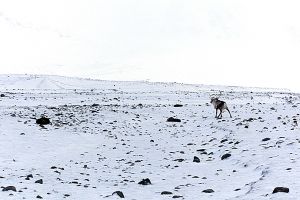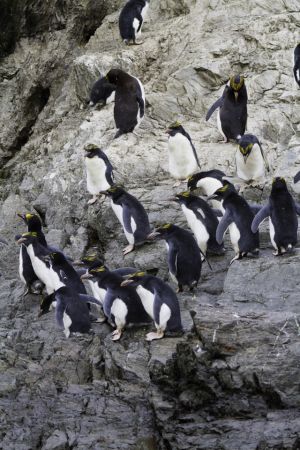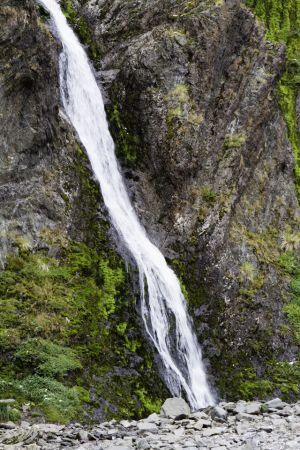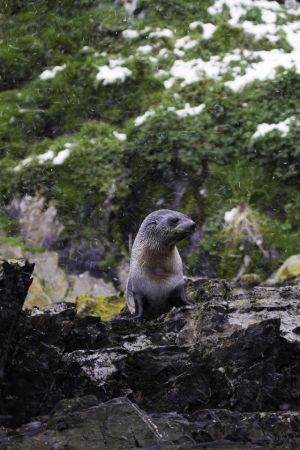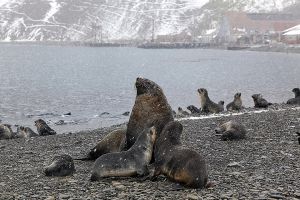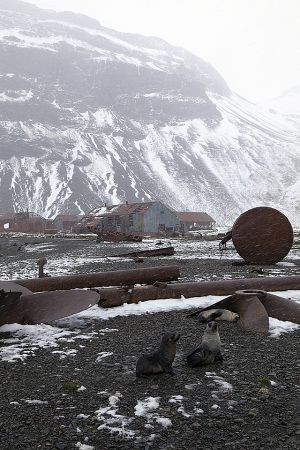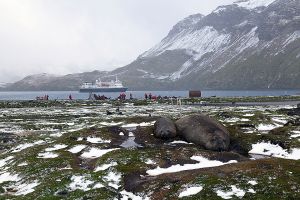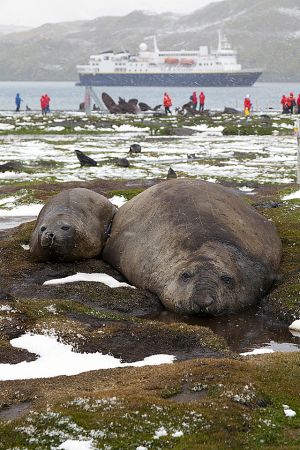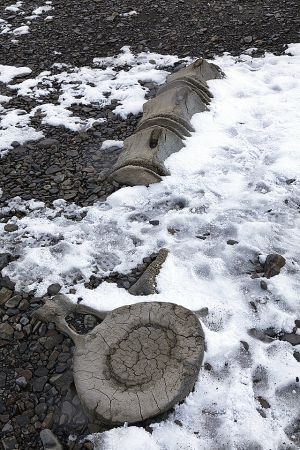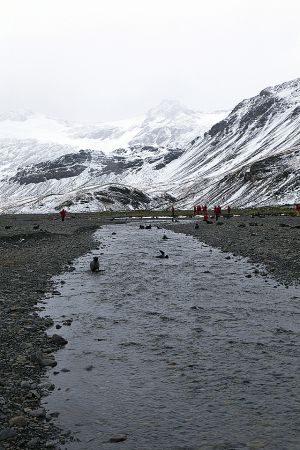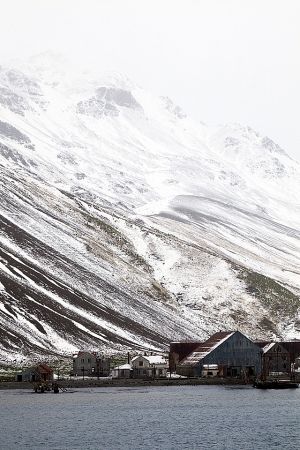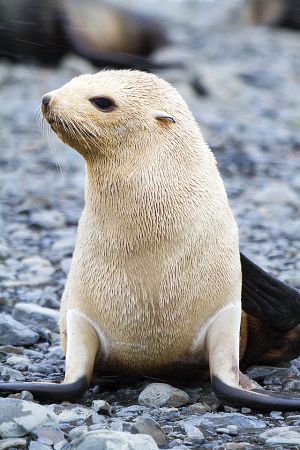We arrive at Fortuna Bay early in the morning – around 7.30am, after a night where the starboard side port hole covers were deployed due to the size of the waves crashing on the windows. It is snowing in Fortuna Bay. In the shelter of the bay, the sea wind has dropped to zero, with an outside temperature of 1 degree Celsius. Katabatic winds are blowing down the glacial valley, bearing icy sleet and dropping the temperature to below zero.
Fortuna Bay is home to a small colony of Antarctic Fur Seals, and a larger colony of King Penguins, which shelter about 1km inland – a long walk each way for the penguins, but they seem to trudge along quite happily. The fur seals are expert climbers, and it is not unusual to see them up on the sides of the bay, a good 400 metres or so above the beach.
The snow gives Fortuna Bay a different look to previous visits – covered with snow, and with snow still falling it conveys a sense of how variable the weather can be on a heavily glaciated island.
In the early afternoon, we slip into Hercules Bay, for a zodiac ride around the bay. It is still snowing gently, and there are still Macaroni, Gentoo and King Penguins in the area. Young fur seals are dotted around the bay, unsure of what to make of these red-coated strangers riding the noisy black Zodiacs.
Soon after, we move on to Stromness, the location of the whaling station that rescued Shackleton and his men from a miserable death. There is a 200m ‘no-go’ zone around the remains of the station, due to the danger from flying corrugated iron, and the hazard posed by asbestos. These days, Stromness is a defacto fur seal pup crèche. Hundreds of pups are frolicking in the water in front of the station, or lolling on the beach, waiting for their mothers to return to feed them. Surprisingly for mid-March, there are a few bulls still around, and a lone pair of elephant seals wallowing in a mud bath a little way in land. There are also a lot of fur seal pups that don’t appear to be more than a week old, that are giving a wide berth to their older and more aggressive peers.
Fur seals are born aggressive, and there are always a few wanting to issue the challenge to passers-by. A particularly territorial pup, about 6-8 weeks old, makes a point of following me down the beach front at Fortuna Bay, charging and bellowing occasionally, to make sure that I get the message that humans are not welcome in what used to be the killing fields for seals less than 100 years ago. It seems embedded in their DNA that humans are not to be tolerated, given our efforts to effectively exterminate them during the sealing years.

